Ember In The Sky
Ember in the Sky

Picture of the Day 3 - November 10, 2018
Moon orbiting a young gas giant still glowing with heat from it’s formation with a distant blue sun beginning to set.
More Posts from Sharkspaceengine and Others






Pictures of the day - December 22, 2018
Insight System - Sixth Planet (Insight A-VI)
Insight A-Vi is an Earth-like water-world with a surface completely covered in oceans. The planet has a mass of 0.65 Earths and a diameter 0.97 times that of our planet. An extensive ring system surrounds the planet and the oceans contain simple signed-celled life.
The planet orbits at an average distance of 1.10 AU and a day on the surface lasts 18 hours and 31 minutes. Compared to the inner-worlds, Insight A-VI is rather cold with an average global temperature of 41 F. Still the oceans absorb enough heat that there are no ice caps at the poles, since ocean currents keep the water from freezing.
Note the inner two planets have comet like appearance from their atmospheres being strip away by the sun.
High Resolution Pictures
Insight A-VI
Three small moons
Rings
The sun and inner planets
Sunset
Planet rise
Blog Changes
I have decided to try a different direction with this blog and instead of posting a whole bunch of pics of single systems, I am going to start posting a pic of a new world every day. That way its frees me to to explore more systems and find really stunning worlds.
Ultra-Close Orbits of Saturn = Ultra-Cool Science
On Sept. 15, 2017, our Cassini spacecraft ended its epic exploration of Saturn with a planned dive into the planet’s atmosphere–sending back new science to the very last second. The spacecraft is gone, but the science continues!

New research emerging from the final orbits represents a huge leap forward in our understanding of the Saturn system – especially the mysterious, never-before-explored region between the planet and its rings. Some preconceived ideas are turning out to be wrong while new questions are being raised. How did they form? What holds them in place? What are they made of?

Six teams of researchers are publishing their work Oct. 5 in the journal Science, based on findings from Cassini’s Grand Finale. That’s when, as the spacecraft was running out of fuel, the mission team steered Cassini spectacularly close to Saturn in 22 orbits before deliberately vaporizing it in a final plunge into the atmosphere in September 2017.

Knowing Cassini’s days were numbered, its mission team went for gold. The spacecraft flew where it was never designed to fly. For the first time, it probed Saturn’s magnetized environment, flew through icy, rocky ring particles and sniffed the atmosphere in the 1,200-mile-wide (2,000-kilometer-wide) gap between the rings and the cloud tops. Not only did the engineering push the spacecraft to its limits, the new findings illustrate how powerful and agile the instruments were.
Many more Grand Finale science results are to come, but today’s highlights include:
Complex organic compounds embedded in water nanograins rain down from Saturn’s rings into its upper atmosphere. Scientists saw water and silicates, but they were surprised to see also methane, ammonia, carbon monoxide, nitrogen and carbon dioxide. The composition of organics is different from that found on moon Enceladus – and also different from those on moon Titan, meaning there are at least three distinct reservoirs of organic molecules in the Saturn system.

For the first time, Cassini saw up close how rings interact with the planet and observed inner-ring particles and gases falling directly into the atmosphere. Some particles take on electric charges and spiral along magnetic-field lines, falling into Saturn at higher latitudes – a phenomenon known as “ring rain.” But scientists were surprised to see that others are dragged quickly into Saturn at the equator. And it’s all falling out of the rings faster than scientists thought – as much as 10,000 kg of material per second.

Scientists were surprised to see what the material looks like in the gap between the rings and Saturn’s atmosphere. They knew that the particles throughout the rings ranged from large to small. They thought material in the gap would look the same. But the sampling showed mostly tiny, nanograin- and micron-sized particles, like smoke, telling us that some yet-unknown process is grinding up particles. What could it be? Future research into the final bits of data sent by Cassini may hold the answer.

Saturn and its rings are even more interconnected than scientists thought. Cassini revealed a previously unknown electric current system that connects the rings to the top of Saturn’s atmosphere.

Scientists discovered a new radiation belt around Saturn, close to the planet and composed of energetic particles. They found that while the belt actually intersects with the innermost ring, the ring is so tenuous that it doesn’t block the belt from forming.

Unlike every other planet with a magnetic field in our Solar System, Saturn’s magnetic field is almost completely aligned with its spin axis. Think of the planet and the magnetic field as completely separate things that are both spinning. Both have the same center point, but they each have their own axis about which they spin. But for Saturn the two axes are essentially the same – no other planet does that, and we did not think it was even possible for this to happen. This new data shows a magnetic-field tilt of less than 0.0095 degrees. (Earth’s magnetic field is tilted 11 degrees from its spin axis.) According to everything scientists know about how planetary magnetic fields are generated, Saturn should not have one. It’s a mystery physicists will be working to solve.

Cassini flew above Saturn’s magnetic poles, directly sampling regions where radio emissions are generated. The findings more than doubled the number of reported crossings of radio sources from the planet, one of the few non-terrestrial locations where scientists have been able to study a mechanism believed to operate throughout the universe. How are these signals generated? That’s still a mystery researchers are looking to uncover.
For the Cassini mission, the science rolling out from Grand Finale orbits confirms that the calculated risk of diving into the gap – skimming the upper atmosphere and skirting the edge of the inner rings – was worthwhile.

Almost everything going on in that region turned out to be a surprise, which was the importance of going there, to explore a place we’d never been before. And the expedition really paid off!
Analysis of Cassini data from the spacecraft’s instruments will be ongoing for years to come, helping to paint a clearer picture of Saturn.
To read the papers published in Science, visit: URL to papers
To learn more about the ground-breaking Cassini mission and its 13 years at Saturn, visit: https://www.nasa.gov/mission_pages/cassini/main/index.html
Make sure to follow us on Tumblr for your regular dose of space: http://nasa.tumblr.com.

Picture of the Day 2 - January 13, 2019
Sun sets over the limb of a gas giant.

Water ice clouds on Mars (desktop/laptop) Click the image to download the correct size for your desktop or laptop in high resolution
Thank You for Following
I see I now have 13 followers. Thank you for that. Glad to see other people are enjoying my space engine pics and other astronomy topics.
Once again thank you.

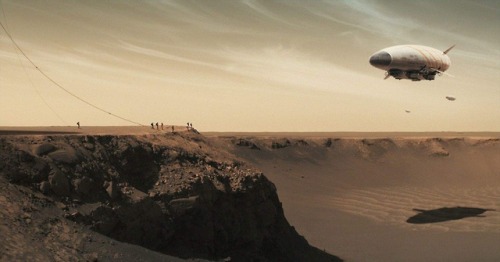
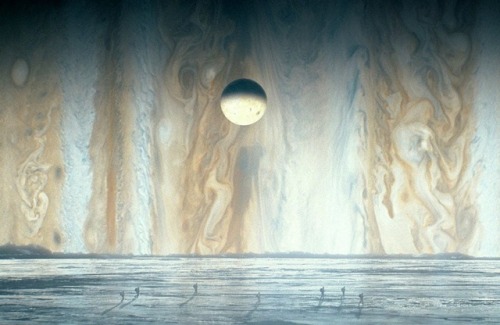

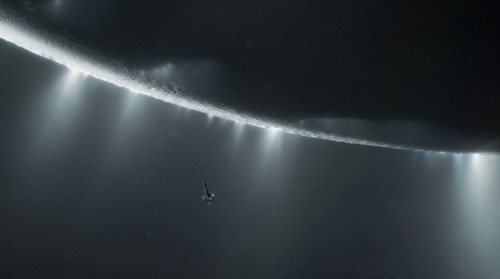
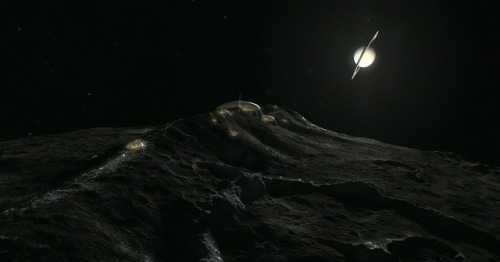
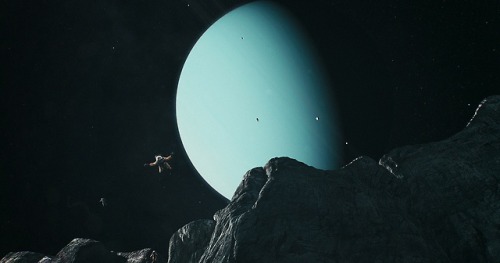
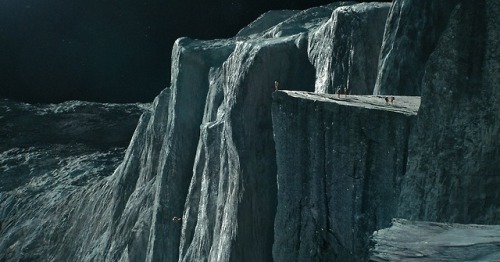

Will we one day explore the worlds of our solar system? How long will this take?
We have a diversity of worlds in our solar system. Majestic places…
Imagine being able to visit Mars and its hostile climate. Imagine being able to visit the moons of Jupiter, observe Io: the volcanic moon, Europa, the frozen moon and Ganymede a moon larger than Mercury itself and that has its own magnetic field. Imagine visiting the moons of Saturn and maybe passing close to your rings… Imagine orbiting or floating through Titan’s atmosphere and closely watching its lakes and seas of methane and liquid ethane. Imagine getting to know the geysers of Enceladus, the valleys of Tethys, and the craters of Mimas… Imagine being able to see the moons of Uranus and have a view of Verona Rupes, the largest cliff of the solar system, located in Miranda. Imagine being able to be in Triton and to be able to observe the cold and azualdo Neptune in the sky…





Pictures of the Day - December 25, 2018 (Merry Christmas)
Insight A System - Either Planet (Insight A-VIII)
Insight A-VIII is the eighth planet orbiting Insight A. It is an ice-giant with a mass 15.46 times that of Earth, and a diameter of 3.19 Earths. The planet has unusually pronounced cloud bands, and a wide-spaced ring system. It orbits it’s sun at an average distance of 4.01 AU, completing 1 orbit every 7.41 Years.
This planet has an active atmosphere with an average temperature of -213 F, and a day on the planet last 11 hours and 6 minus. 5 moons orbit the planet that are large enough to be rounded by their own gravity, including 4 larger than 2,000 kilometers across.
High Resolution Pictures
Insight A-VIII
Transiting Moon
Closeup
Asteroid Moon
View from outer-most large moon
My Space Engine Adventures, also any space related topic or news. www.spaceengine.org to download space engine. The game is free by the way. Please feel free to ask me anything, provide suggestions on systems to visit or post any space related topic.Check out my other blog https://bunsandsharks.tumblr.com for rabbit and shark blog.
294 posts
![Star Cluster Melotte 15 In The Heart Nebula [IC 1805]](https://64.media.tumblr.com/8b8ffde97e975e9cf7889e2625a4928f/tumblr_pf830p2BAC1vhj0upo1_500.jpg)
